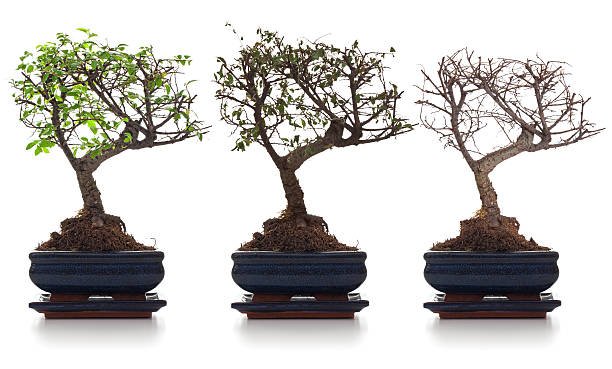Tips to take proper care of your Lavender Bonsai !
Lavender bonsai plants are a delightful addition to any indoor or outdoor garden. With their vibrant purple flowers and fragrant aroma, they can bring a sense of tranquility and beauty to your space.
However, like any living plant, lavender bonsai plants require proper care to thrive. In this article, we will guide you through the essential steps to ensure the health and longevity of your lavender bonsai.
I have given 2 surprise elements inside hoping you would like it!
Tips to take proper care of your Lavender Bonsai
1. Choosing the Right Location
To begin, select an appropriate location for your lavender bonsai plant. Lavender thrives in full sunlight, so it’s crucial to place your bonsai in an area that receives at least six hours of direct sunlight each day. Additionally, ensure that the spot has good air circulation, as lavender plants prefer well-ventilated environments.
2. Providing the Ideal Soil
The next step in caring for your lavender bonsai is choosing the right soil. Lavender plants require well-draining soil with a slightly alkaline pH level between 6.7 and 7.3. You can create a suitable soil mixture by combining equal parts of potting soil, sand, and perlite. This blend will provide adequate drainage while retaining the necessary moisture for your bonsai plant.
3. Watering the Lavender Bonsai
Proper watering is crucial for the health of your lavender bonsai. It’s important to strike a balance between overwatering and underwatering. Lavender prefers slightly dry conditions, so water your bonsai plant when the top inch of soil feels dry to the touch. Avoid waterlogging the roots as excessive moisture can lead to root rot and other diseases.
4. Fertilizing Regularly
To promote healthy growth and vibrant blooms, it’s essential to fertilize your lavender bonsai plant regularly. During the growing season, which typically spans from spring to early fall, apply a balanced, water-soluble fertilizer every two to four weeks. Dilute the fertilizer according to the manufacturer’s instructions to avoid overfeeding, which can harm the plant.
5. Adjust the Soil pH
Lavender bonsai plants thrive in slightly alkaline soil with a pH level between 6.7 and 7.3. Test the pH of your soil using a pH testing kit. If the pH is too acidic, you can raise it by adding limestone or dolomite lime to the soil. Follow the instructions carefully to achieve the desired pH level.
6. Pruning and Shaping
Pruning is an integral part of maintaining the shape and health of your lavender bonsai plant. Regularly trim back any dead or damaged branches to encourage new growth. Additionally, pinch off spent blooms to encourage the plant to produce more flowers. Pruning can be done throughout the year, but it’s best to avoid heavy pruning during the dormant winter months.
7. Protecting from Pests and Diseases
Like any plant, lavender bonsai plants can be susceptible to pests and diseases. Keep a close eye on your bonsai for common pests such as aphids, spider mites, and whiteflies. If you notice any signs of infestation, treat the plant with an appropriate insecticidal soap or neem oil. Additionally, ensure proper air circulation and avoid overwatering to prevent fungal diseases.
8. Winter Care
During the winter months, lavender bonsai plants enter a dormant phase. It’s important to provide them with the right conditions during this time. Move your bonsai plant to a cool location with a temperature between 40°F and 50°F (4°C to 10°C). Reduce watering and fertilizing during this period, but ensure the soil doesn’t completely dry out.
Are you facing problems in shifting your outdoor Lavender bonsai plant indoors?
BONUS:-
10 Symptoms That Your Lavender Bonsai Is Getting Weak

Lavender bonsai plants are generally resilient, but they can show signs of weakness when they are not receiving adequate care or facing unfavorable conditions. It’s important to recognize these symptoms early on to take appropriate action and prevent further decline. Here are ten common symptoms that indicate your lavender bonsai may be getting weak:
1. Yellowing Leaves
One of the earliest signs of a weak lavender bonsai is the yellowing of leaves. If the vibrant green color starts fading and the leaves turn yellow, it can indicate nutrient deficiencies, overwatering, or improper soil conditions.
2. Wilting Leaves
When the leaves of your lavender bonsai start drooping or wilting, it’s a clear indication that the plant is under stress. Wilting can occur due to inadequate watering, root problems, or excessive heat exposure.
3. Stunted Growth
If your lavender bonsai is not showing signs of healthy growth, such as new leaves or branches, it may be a sign of weak vitality. Stunted growth can result from nutrient deficiencies, insufficient sunlight, or improper pruning.
4. Sparse Foliage
A healthy lavender bonsai should have lush foliage, but if you notice that the foliage is becoming thin or sparse, it suggests that the plant is struggling. Poor nutrition, lack of sunlight, or pest infestation can lead to a reduction in foliage density.
5. Loss of Fragrance
Lavender bonsai plants are prized for their fragrant blooms. If your bonsai loses its characteristic aroma, it could be an indication of a weak and stressed plant. Environmental factors, disease, or nutrient imbalances can contribute to the loss of fragrance.
6. Pests Infestation
The presence of pests such as aphids, spider mites, or scales on your lavender bonsai can weaken the plant’s overall health. Look for signs of tiny insects, sticky residue, or distorted leaves, which are common indicators of pest infestation.
7. Fungal Infections
Fungal infections can cause serious harm to lavender bonsai plants. Keep an eye out for symptoms like discolored or rotting roots, mold growth on the soil surface, or black spots on leaves. These signs suggest the presence of fungal diseases that weaken the plant.
8. Leaf Spotting or Discoloration
If you notice spots, browning, or discoloration on the leaves of your lavender bonsai, it could be a sign of stress or disease. Leaf spotting can be caused by various factors, including nutrient deficiencies, overwatering, or fungal infections.
9. Weak or Brittle Stems
When the stems of your lavender bonsai become weak or brittle, it indicates a lack of strength and vitality. Weak stems can result from insufficient sunlight, inadequate nutrients, or improper pruning practices.
10. Lack of Flowering
Lavender bonsai plants are prized for their beautiful flowers. If your bonsai fails to produce blooms or experiences a significant reduction in flowering, it suggests a weakened state. Factors like inadequate sunlight, nutrient imbalances, or improper pruning can impact the flowering ability of the plant.
Conclusion
Caring for a lavender bonsai plant requires attention to detail and regular maintenance. By providing the right amount of sunlight, well-draining soil, and proper watering, you can ensure the health and longevity of your bonsai.
Remember to fertilize regularly, prune when necessary, and protect the plant from pests and diseases. With these essential care steps, you’ll have a beautiful lavender bonsai that brings joy and tranquility to your space for years to come.

